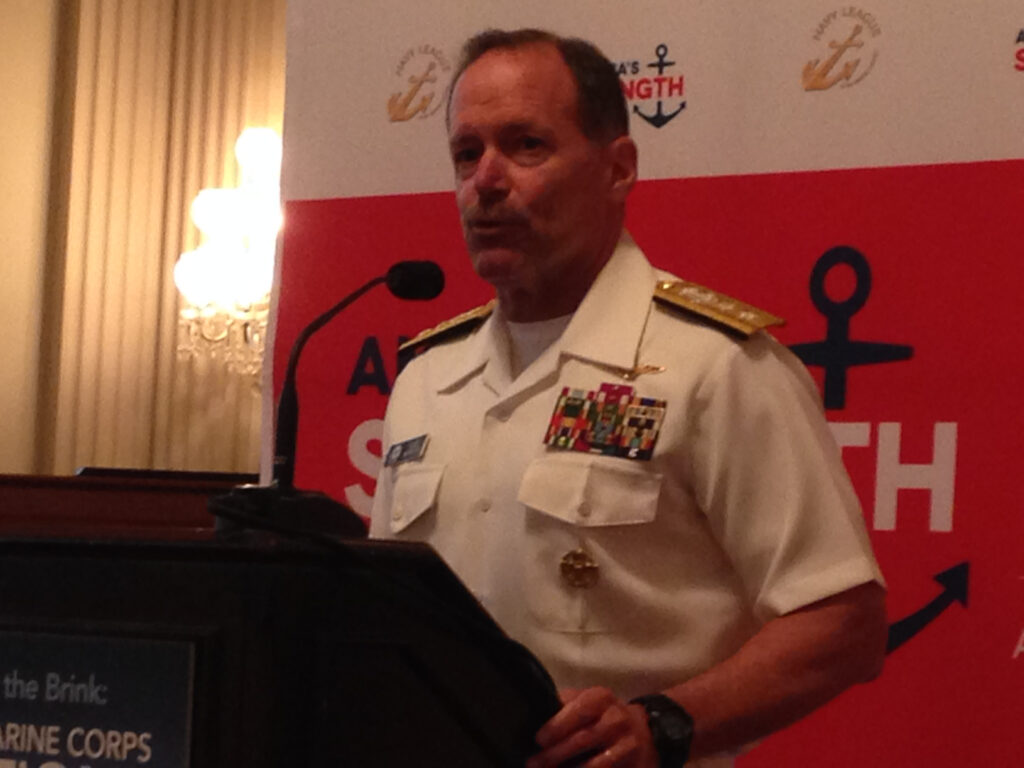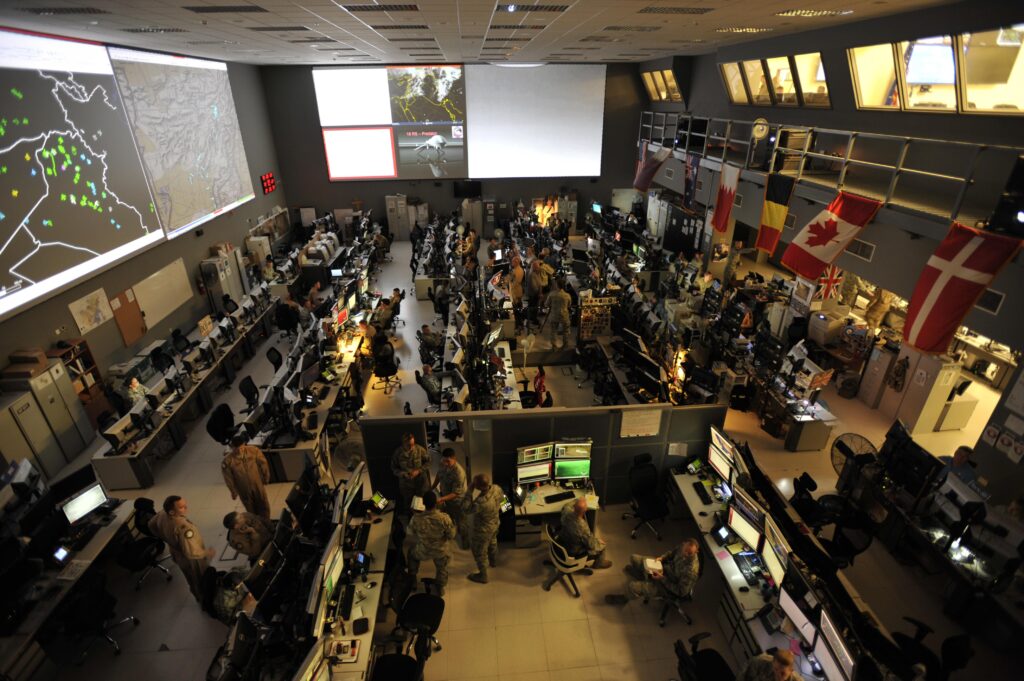Rear Adm. Manazir Speaks On Allied Force Transformation, A2AD
Posted on

Rear Adm. Mike Manazir
Recently, Chief of Naval Operations John Richardson drove home the point that using the term Anti-Access Area Denial (A2AD), was too vague as to be useful to define the effort of US and allied forces to deal with peer competitors.
“The term ‘denial,’ as in anti-access/area denial is too often taken as a fait accompli,” the CNO said, “when it is, more accurately, an aspiration. Often, I get into A2AD discussions accompanied by maps with red arcs extending off the coastlines of countries like China or Iran. The images imply that any military force that enters the red area faces certain defeat – it’s a ‘no-go’ zone!”
But for the CNO not only does A2AD ascribe capabilities to peer competitors that are not demonstrated, but the term suggests an outcome when in fact U.S. and allied forces are being shaped to operate very differently than in the period of the dominance of the land wars.
Richardson is focused as well on the reshaping of the maritime forces to operate in a much more effective manner throughout an extended battlespace. The CNO has crafted a concept which he calls kill webs to describe the way ahead for the maritime and joint force.
We recently discussed the evolving approach to this issue with one of the senior Naval officers charged with translating the approach into combat reality, namely Rear Adm. Michael Manazir, deputy Chief of Naval Operations for Warfare Systems (OPNAV N9). He is responsible for the integration of manpower, training, sustainment, modernization and procurement of the Navy’s warfare systems.
It is clear that both the Air Force, the Navy and Marine Corps team are focused on shaping the force for the high-end fight against peer competitors. The Army’s main contribution in such considerations is the expanding and evolving role of Army Air Defense and Missile Defense systems. But in so doing, the focus is upon shaping a modular, agile force, which can operate across the spectrum of military operations; not just be honed simply for the high-end fight. It is about shaping multi-mission and multi-tasking platforms into an integrated force, which can deliver lethal and non-lethal effects throughout the distributed battlespace.
Recently, the new Air Force Chief of Staff, Gen. David Goldfein, underscored that preparing for the high-end fight was a moral imperative. Given similar language and statements by the Chief of Naval Operations, this raises the question of the evolving working relationship between the Air Force and the Navy and Marine Corps Team.
“We are working closely with General Goldfein through various service interaction groups; most effectively at the highly classified level,” Manazir told us. “The core commonality between the two is that both are expeditionary services. When we get into the battle area, Air Force assets can strike, reset, and strike again. Naval forces operating in the maritime domain provide persistence. If you combine Air Force and Naval combat capabilities you have a winning combination. If you architect the joint force together, you achieve a great effect.”

Combined Air & Space Operations Center (CAOC)
A key focus for the changes needed is the kind of command and control for a distributed force to ensure decision-making superiority. The hierarchical CAOC (Combined Air and Space Operations Center) is an aging artifact of nearly 16 years of ground war which assumes the US and the allies had complete air superiority. Dealing with peer competitors and drawing upon the assets in a distributed approach requires different force configuration, training and operational foci.
Manazir underscored that, “C2 is ubiquitous across the kill web. Where is information being processed? Where is knowledge being gained? Where is the human in the loop? Where can core C2 decisions best be made and what will they look like in the fluid battlespace? The key task is to create decision superiority. But what is the best way to achieve that in the fluid battlespace we will continue to operate in? What equipment and what systems allow me to ensure decision superiority?”
As the technology changes and as the force becomes more effectively in the extended battlespace changes are necessary to shape appropriate rules of engagement for the distributed force. “The rules of engagement (ROE) need to keep up with the technology,” the admiral said. “An F-35 is going to have electronic means that can affect somebody a long way away. We didn’t have those electronic means before, and so the ROE should be able to allow us to employ weapons based on the technology that we have.”
One of the key aspects of changes involves weapons in the kill web. Target identification and weapons delivery will not be necessarily located on the same platform. Indeed, the ability to deliver lethal effect in the electro-magnetic battlespace will be distributed throughout the kill web. Weapons are distributed throughout the kill web and can be fired by platforms also operating throughout the kill web capable of firing weapons not carried by that platform.
Distributed strike will become increasingly significant as well as weapons modernization accelerates and the problem of providing new capabilities to the force, a force that is distributed in operations.
A new capability already in the fleet but whose future has just begun are directed energy weapons. As Manazir put it: “directed energy weapons are part of our overall transformation in the weapons enterprise. Directed energy weapons are fifth generation weapons. Directed energy weapons, coupled with other new types of weapons, are critical to empowering a distributed force.”
Put simply, the 30-kilowatt laser on USS Ponce works right now. But the overall approach is to build from deployed capabilities to more optimal directed energy weapons. Manazir outlined the Navy’ strategy: “In order to have the higher-end kinetic effect, you have to have the space for the weight of the laser itself, the power for it, and then the cooling-wherever the source.
“Obviously, with a ship in the water, you have an unlimited source of cooling water. Then, in order to have a very, very deep magazine for a laser shot, you either have to have a constant source of fairly high electrical power, or you have to have a very large battery. We are not waiting until we have what many see as the ultimate goal, a one-megawatt laser weapon; we would like to build capability incrementally.
“Over time we will be able to field higher and higher power laser weapons. It is about putting it into the fleet and evolving the capability; it is not about waiting until we have the optimal weapon. We need not just the weapon, but the training and the tactics shaped by the fleet to provide inputs to how best to integrate the capability into the force.”
Manazir outlined some of these ideas in a recent presentation at the Williams Foundation Seminar on air-sea integration held in Canberra on August 10. With the Aussies and Brits participating, it was clear these core allies share that the Navy’s focus on kill webs as well. Manazir underscored the importance of the allied-US engagement in force transformation in our interview.
“In effect, when we can operate together in this new environment and work from the same page, we can support core allies or allies can support us in the battlespace,” he said. “We can function as each other’s wingman. We are moving from a platform-centric mindset to a capability-centric mindset.”
The entire kill web approach affects the modernization and acquisition of platforms as well as the high-end training necessary to shape an integrated force.
According to Rear Admiral Manazir, the Navy is focused on innovations in the man-machine interactive capabilities. By so doing, the Navy is focused on levearging the interactive capabilities of manned and unmanned systems as well as kinetic and non kinetic ones. In the famous OODA loop the focus is upon finding ways for the machine to work more effectively in delivering the OO part of the OODA loop and innovating in how the combat warriors then can make decisions in the extended battlespace.
According to Rear Admiral Manazir: “The key is continually evolving combinations of capabilities that enhance the defensive and offensive power of the platforms that you put into the kill web. We are very focused on the evolving man-machine relationship, and the ability of manned and unmanned systems, as well as kinetic and non-kinetic systems, to deliver a broader spectrum of capability to the force.
“We are aiming to use the machine for the OO (Observe-Orient) part of the OODA (Observe-Orient-Decide-Act) Loop and optimize our human capabilities to do the DA (Decide-Act). Fighter pilots have always been “thinking aviators” but we are adjusting what we expect from them as they become key nodes and crucial enablers in the kill web. Becoming a Top Gun pilot in this world will be quite different than in the legacy one,” Manazir said.
Subscribe to our newsletter
Promotions, new products and sales. Directly to your inbox.
